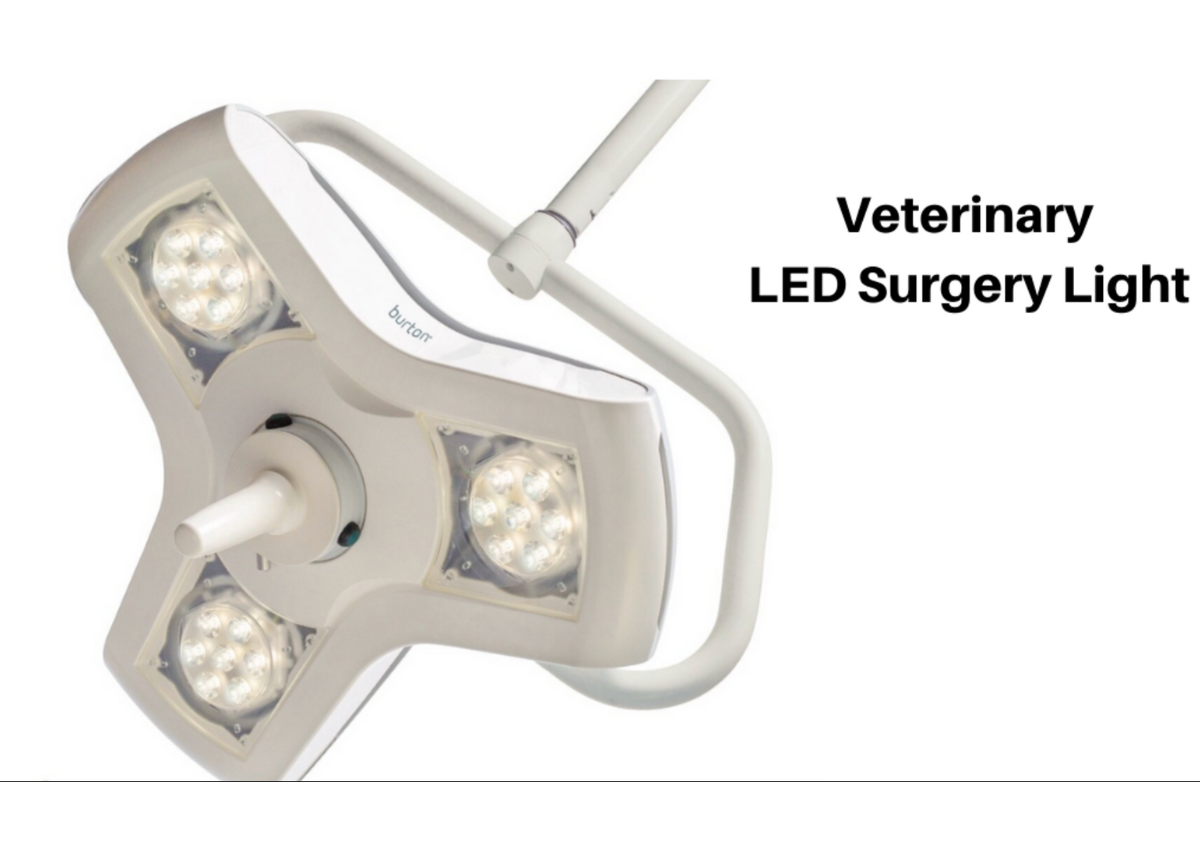Optimize Your Veterinary Surgical Suite with Proper Lighting
Veterinary Surgical Lighting: Considerations for Purchasing a Surgery Light
Good lighting is crucial in the veterinary surgical suite. The surgeon MUST be able to see what they are doing to accurately make incisions and place sutures. Veterinary surgical and procedure lights also help a veterinarian discover any abnormal bleeding, tissue lesions that need further evaluation, or other abnormalities during surgery.
Here are some considerations for purchasing a surgical light for your veterinary practice…
Light Brightness and Quality
There are many companies that sell different models of veterinary surgery lights. Knowing what you’re looking for can help narrow down the search and save time. Here are some factors to think about…
Light source. Some veterinarians prefer headlamps or loupes, while others prefer overhead lighting. Although this is a personal choice, it may be beneficial to have a permanent overhead light fixture available for all associates, relief vets, and others who may be using the surgery suite.
Type of light. LED lights are a very popular option due to their energy efficiency, brightness, low heat production, and long lifespan.
Brightness. Bright light is great for seeing more of the surgical field in detail. However, it’s possible to have ‘too much of a good thing. Some people develop headaches from lighting that is overly bright, or the light may create an intense glare off of surgical instruments. A good balance may include surgical lights that have multiple brightness settings or dimming capabilities, so the surgeon can adjust the brightness as needed.
Shadow reduction. Look for veterinary surgical lights designed to reduce harsh shadows that could otherwise distort visibility in the surgical field.
Surgical Light Positioning and Portability
Permanent light fixtures may be mounted in the room on the wall or ceiling. Sometimes, a practice’s ceiling height plays a role in determining which light fixture setup is the best fit.
Look for surgical lights on moveable arms that have minimal drift, so that the surgeon can move the light as needed and the light will stay where they put it.
Some practices use double surgical lights rather than a single light, to avoid shadowing. But it’s also possible to choose a single light designed to minimize shadows, or even combine an overhead surgical light with a headlamp or loupe.
In some cases, a portable light on a stand might make sense. This depends on the setup of your clinic.
Also, consider how many lights your practice needs. It’s usually beneficial to have a separate light for the dental suite and wet table since this area doesn’t maintain the same level of sterility as a surgical suite.
Additional Considerations
Here are a few other practical considerations for choosing surgical lighting for a veterinary clinic…
Good lighting is an investment, but it must fit into your financial plan. Talk to veterinary business or financial consultants to see which financing options are available and how payments will fit into your monthly cash flow. Remember to ask about tax benefits for equipment purchases, as well as whether any rebates are available (from your municipality or local power company) for switching to LED lighting.
Find out about warranties, maintenance plans, or other ways to protect your investment.
Make sure the light is easy to clean. Since it’s in the surgery suite, thorough cleaning is a must. See about the availability of sterile handles or coverings that allow the veterinarian to move the light while scrubbed in.
Look at your state’s requirements. Some may require a built-in surgery light and/or a backup lighting supply in case of a power outage. Make sure your lighting choice keeps you on the right side of any local regulations.
Conclusion
Adequate surgery lighting is crucial for any veterinary practice where surgeries and procedures are performed. But the best lighting choice and setup depends on your practice’s space and specific requirements.
Ask colleagues for opinions and recommendations on their favorite surgery lights. Think about the layout of your surgery suite and how many procedures your doctors typically perform.
Make a list of the features you need. This will help narrow down the choices so you can find the perfect lighting setup for your clinic.
Written by: Dr. Tammy Powell, DVM



